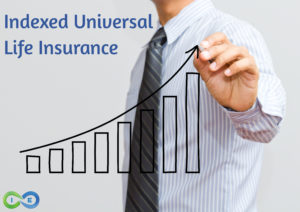Term life insurance is a very important part of a financial plan. At I&E, we will often recommend term insurance, even if it simply means we are using it to blend with a whole life insurance policy.
In the following article we will cover all things term life insurance, as well as list our top picks for the best companies.
You will notice our list of the best term life insurance companies differs from many of the other mainstream offerings.
One reason for this is because we believe strongly that any term policy worth its weight must be convertible term insurance, that allows the owner to convert the policy to permanent coverage.
Not all of the companies we list below have a good conversion option, but it made it into the list for other factors, such as non med options, affordability or riders offered.
Top 10 Best Term Life Insurance Companies
Our current picks for the best term life insurance companies include:
- American General
- Banner Life
- Equitable
- John Hancock
- Lincoln Financial
- MassMutual
- Penn Mutual
- Principal Financial
- Protective Life
- Prudential
We list the following companies along with their financial ratings. You can learn more about life insurance ratings here.

American General
- A.M. Best: A
- S&P: A+
- Moody’s: A2
- Fitch: A+
AIG-American General offers AG Select-a-Term. You have a lot of options on term lengths, including 10 year, 15-30 in one year increments, and a 35 year term life insurance option.
Non Med underwriting available up to age 50 for up to $1,000,000 in coverage.
For more, please visit our AIG life insurance review.

Banner Life
- A.M. Best: A+
- S&P: AA-
- Moody’s: N/A
- Fitch: AA-
OPTerm allows various term lengths, including a 40 year term life insurance option. A conversion credit is also available.
Banner Life has a strong healthy credits program, which may improve your health rating one risk class if you qualify.
For more, please visit our Banner Life review.

Equitable
- A.M. Best: A
- S&P: A+
- Moody’s: A2
- Fitch: N/A
Easy Underwriting is available for ages 18-50 up to $500,000 face amounts.
Term lengths include annual renewable term, 10, 15, 20 years.
A Term Conversion Credit enhancement is available which allows 125% of the policy’s first year premium to be credited if the conversion option is used in the first 5 policy years.
For more, please stop by our Equitable review.

John Hancock
- A.M. Best: A+
- S&P: AA-
- Moody’s: A1
- Fitch: AA-
Protection Term and Vitality Term: 10, 15, 20 and 30 year term lengths are available. Express Track underwriting is available for ages 18-60.
Vitality Program: You can earn points for annual health screenings, exercising, avoiding tobacco. And as points accumulate, you can move up from Bronze to Silver to Gold to Platinum. Each higher level results in potential premium savings, travel discounts, gift cards, etc.
Additionally, Vitality also works in conjunction with Aspire, for clients with diabetes.
For more, please visit our John Hancock review.

Lincoln Financial
- A.M. Best: A+
- S&P: AA-
- Moody’s: A1
- Fitch: A+
Lincoln LifeElements and TermAccel: 10, 15, 20 and 30 year terms available.
LincXpress accelerated underwriting is available for ages 18-60 on face amounts up to $1,000,000.
For more, please see our Lincoln Financial review.
MassMutual
- A.M. Best: A++
- S&P: AA+
- Moody’s: Aa3
- Fitch: AA+
Vantage Term is guaranteed renewable to age 90, but the best part about this convertible term policy is that it can be converted to one of MassMutual’s excellent permanent life policies.
Terms available include ART, 10 year and 20 year. An accelerated death benefit and waiver or premium rider is available.
MassMutual’s Direct Term is available for ages 18-64 on face amounts up to $1,000,000.
For more, please see our MassMutual review.

Penn Mutual
- A.M. Best: A+
- S&P: A+
- Moody’s: Aa3
- Fitch: N/A
Guaranteed Convertible Term from Penn Mutual offers various term lengths, which include 10, 15, 20 and 30 years. And according to Penn Mutual, “When you convert, you’ll receive a credit equal to the annual premium of your term policy to help fund your new permanent policy.”
ACE accelerated underwriting program for face amounts up to $5,000,000 for ages 20-65.
For more, please see our Penn Mutual review.
Principal Financial
- A.M. Best: A+
- S&P: A+
- Moody’s: A1
- Fitch: AA-
Accelerated Underwriting program for face amounts up to $2.5 million, ages 18-60. Term lengths include 10, 15, 20, 25 and 30 years.
For more, please see our Principal Financial review.

Protective Life
- A.M. Best: A+
- S&P: AA-
- Moody’s:
- Fitch: A+
Protective Life Underwriting Solution for up to $1,000,000 in coverage on ages 18-45, and $500,000 ages 46-60.
Classic Choice Term lengths include 10, 15, 20, 25, 30, 35, and 40 years.
Income Provider Option allows the death benefit to be paid in periods, rather than in one lump sum.
Please see our Protective Life review for more.

Prudential
- A.M. Best: A+
- S&P: AA-
- Moody’s: Aa3
- Fitch: AA-
Term Elite and Term Essential, with term lengths including 10, 15, 20 and 30 years.
PruFast Track accelerated underwriting for up to $1,000,000 ages 18-60.
Please visit our Prudential life insurance review for more.
Term Life Insurance Policy
Term Life Insurance Defined: Term life insurance is a contract (i.e. policy) between the owner and the company (i.e. the insurer), where the company agrees to pay out a death benefit to the beneficiary upon the death of the insured, if the insured dies within the term period.
Term life insurance provides death benefit protection for a specified period of time. You can choose between an annual renewable term, 5 years, 10, 15, 20, 25 and 30 year term, with a few companies offering 35 and 40 year terms.
Generally term policies are level term life insurance, which means the premium and death benefit stay the same for the duration of the term policy.
About Term Life Insurance
Novelist Terry Pratchett popularized a concept long familiar to economists and now known as the “boots theory of economics” (or, less pithily, the “boots theory of socioeconomic inequality”).
In short, if you pay $100 for a pair of boots that lasts you twenty years, you got a better deal than if you pay $20 for boots that only hold up for two years. The second pair is cheaper, but it also provides a lot less value. You’re getting less bang for your buck.
As with boots, value and “bang for the buck” are paramount considerations when evaluating term life insurance.
The basic idea behind term life is fairly straight-forward. In exchange for regular premium payments, the insurance company promises to pay out a death benefit if the insured person dies during the policy’s contractual coverage window (i.e., the “term”).
If the insured outlives the term, the policy expires without a payout.
Notwithstanding the simplicity of the concept, there are multiple criteria affecting whether a given term life policy is a “good deal.”
The cost of term life insurance, of course, is a major factor in the analysis.
But the cheapest policy isn’t always the best policy in every scenario.
Everything from coverage amount and term length to supplemental benefits and options need to be weighed when assessing a policy.
And, most important of all, you want to find a policy that provides the appropriate protection for your situation.It is important to consider the following features of a term life insurance policy.
Increased Value Through Conversion Options
Because one of the chief downsides of term life insurance is that it eventually lapses, the contractual right to trade term coverage for permanent life insurance can make a term policy more attractive.
Convertible term life insurance policies include a rider or other built-in language granting the policyholder the right to convert the term coverage into permanent life insurance.
The choice to convert and which company will depend on the insurance carrier you choose. Most companies allow you to convert to either universal life or whole life.
Depending on the insured’s age, the option may have to be exercised before a certain date or prior to expiration of the term.
Typically, the new whole life policy has a lower death benefit and/or higher premiums than the term coverage.
But the benefit of whole life is that it never expires—the coverage is guaranteed to stay in place no matter how long you live—and the premiums stay constant the entire time.
Whole life also accrues cash value that can be withdrawn or borrowed against, making it a valuable retirement-planning tool.
Convertible term life insurance is designed for people who want the higher death benefit of term life for a fixed duration (e.g., until the mortgage is paid off or the kids move out), with permanent, fixed-rate coverage on the backend.
If, for instance, you need a higher coverage level for income-replacement protection until retirement—and you also want permanent life insurance available to pay final expenses, taxes, or to fund a special needs trust for a disabled dependent—convertible term coverage might be a smart way to accomplish both objectives with a single policy.
Of course, you could just purchase a term policy and then get a new whole life policy once the term ends.
But in that scenario, you’ll have to go through the entire underwriting process again, likely including a medical examination, and there’s no guaranty that you’ll still qualify for coverage or be able to find a policy with affordable premiums.
With convertible term, you have a contractual right to exercise the conversion option, so you avoid the risk of being denied coverage.
And you typically pay lower premiums for a whole life policy converted from term than for a brand-new policy with comparable coverage.
Coverage Amount
Along with an applicant’s age and health status, the death benefit amount plays a huge role in determining the premium cost for a term life policy.
Basically, the higher the coverage, the higher the premiums will be.
A policy that’s a little cheaper but provides a lot less coverage offers less value than a policy that’s a little more expensive but with a significantly higher death benefit.
Ultimately, you want to purchase a policy that offers the level of financial protection necessary to meet your needs.
If your goal is to ensure the mortgage gets paid off if you die early, you’ll probably need less coverage than if you’re protecting against loss of a primary breadwinner’s income until the kids have grown up and moved out.
Some term policies have built-in or optional riders that increase the coverage amount for certain causes of death.
For example, a policy might have language doubling the payout if the insured dies as a result of an occurrence qualifying as an “accident.”
Riders providing for supplemental coverage in certain events increase both the cost and the overall value provided by a term policy.
Depending on the insured’s occupation and lifestyle—and the chance that the supplemental coverage will be triggered—the extra expense can easily be worth a moderately increased premium.
Term Length
Insurers commonly offer terms as short as one year and as long as thirty years, with a few companies offering a 35 and 40 year term.
As a general rule, a longer term will require a higher premium because a policy is more likely to be triggered as the insured gets older.
For example, you can compare the difference between a 20 year term policy vs 30 year term life insurance.
However, longer terms can sometimes provide greater value if you know you’ll need the coverage for the entire period.
In most cases, you end up paying lower total premiums over the course of a thirty-year term than you’d pay for a policy with a ten-year term renewed twice (for 30 years of combined coverage).
The 10 year term life policy probably starts off cheaper, but each time it is renewed, the insurer reevaluates the risk and (almost always) increases the premiums.
The older you get, the more expensive it is to renew a term policy, and, as you reach retirement age, it gets harder to qualify for any term coverage at all.
Even guaranteed-renewal policies eventually reach a point where premiums are effectively unaffordable.
So, an applicant who is pretty sure he or she will need coverage over an extended period often saves money in the long run by paying the higher early premiums for an extended term.
Notably, though, some long-term policies allow for premium increases periodically throughout the term, so the analysis may change depending on whether premiums are fixed or subject to increase.
Increased Value Through Living Benefits
Living benefits are another important consideration when appraising the value provided by term life policies.
Plain, vanilla-flavored term life coverage only results in a payout if the insured individual dies during the policy’s term.
But a policy with living benefits has the potential to pay out even if the insured doesn’t die during the coverage window.
Depending on the situation and the policyholder’s needs, living benefits can end up substantially increasing the real value provided by a term policy.
Living benefits connected to term policies are usually implemented through riders accelerating death benefits under precisely defined circumstances.
That is, upon the occurrence of a specified event, the insurance company is required to pay out some or all policy proceeds, even if the insured person is still living.
For example, a critical illness rider might trigger a payout if the insured is diagnosed with one of several major medical conditions identified in the policy.
With most acceleration riders, amounts paid out early as living benefits are deducted from any subsequent death benefit paid out under the policy.
Insurance companies don’t all offer the same living benefits riders or charge the same premium for the riders they make available.
Some insurers include accelerated benefits such as terminal illness riders within their standard term coverage.
Most other riders allowing for early payment are optional–available for an increased premium.
Living benefits add to the overall economic utility of term life insurance by increasing the chance of a policy ultimately resulting in a payout.
A long-term disability rider, for instance, provides supplemental income if an insured develops a disability and is unable to work.
So, even if the insured doesn’t die during the term, the insurance company might still have to make payments under the policy.
As a result, a term policy with one or more living benefits riders might end up being a better option than a term policy that costs less but lacks any potential living benefits.
If the rider is ultimately triggered, the additional premium cost will have been money well spent.
Finding the “Best” Term Life Policy
It’s impossible to say that any single policy is the “best” term life insurance because a policy that’s perfect for one person might be wrong for someone else.
Instead, it’s better to think in terms of finding the right policy for each individual applicant. To do that, you need to start by identifying your objectives and priorities.
Life insurance companies don’t all operate in the same way, and some companies do certain things better than others.
One insurer might specialize in extended term policies while another offers a generous disability rider.
Once you’ve pinpointed your goals, you can focus on insurers that are good at the things that are important to you.
And, after you’ve narrowed down the policies that meet your coverage needs, you can compare premiums rates to find where the best value lies.
In the consumer age, it’s easy to get stuck in the trap of shopping exclusively based on price.
Nobody wants to pay too much, so it’s tempting to just go with whatever option is cheapest.
Whether you’re buying boots or life insurance, price is an important factor to consider, but it’s not the only factor.
An experienced life insurance professional can help you find term life coverage that presents the best value in your individual situation.
And that is where we come in.
At I&E, we will take the time to go over your options. You can ask any questions and our experienced life insurance professionals will help you make the best choice for you, based on your unique needs and goals.
So what are you waiting for? Give us a call today to experience the I&E difference.



